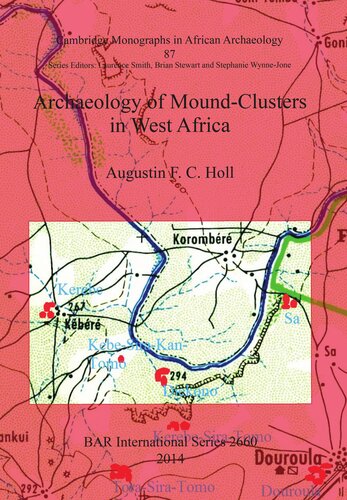

Most ebook files are in PDF format, so you can easily read them using various software such as Foxit Reader or directly on the Google Chrome browser.
Some ebook files are released by publishers in other formats such as .awz, .mobi, .epub, .fb2, etc. You may need to install specific software to read these formats on mobile/PC, such as Calibre.
Please read the tutorial at this link: https://ebookbell.com/faq
We offer FREE conversion to the popular formats you request; however, this may take some time. Therefore, right after payment, please email us, and we will try to provide the service as quickly as possible.
For some exceptional file formats or broken links (if any), please refrain from opening any disputes. Instead, email us first, and we will try to assist within a maximum of 6 hours.
EbookBell Team

0.0
0 reviewsArchaeology of Mounds clusters in West Africa aims to understand the dynamics that enhanced and sustained the settlement systems made of distinct but close mounds. Most of the mounds-clusters are found in low-lying and flat areas in West Africa sahel and savanna. It has been suggested that West-Africa mound-clustering resulted from patterns of residential segregation articulated on ethnicity, specialized occupation, and/or both. However, most of the archaeological research conducted so far on this kind of settlement has failed to test this hypothesis, and does not address the very issues of their processes of formation and patterns of development. The methodology adopted - single mound sampling approach – does not allow for such explorations. The comprehensive approach presented in this book is articulated on the implementation of complementary excavation strategies. This involves the test excavation of all the mounds of two of the largest mounds clusters found in the study area, and the sampling of a third one, located in a different environmental context. The fine-grained chronology obtained allows the probing of the patterns of growth and diversification of mounds clusters through time, showing the operations of a broad range of settlement location decisions. Bio-anthropological data points clearly to warfare during the scramble for land that took place during the first quarter of the second millenium AD. Depending on time-sequences, special purpose mounds – iron producers, weavers, karité-oil producers – are differentially integrated in each of the tested mounds-clusters. No single settlement strategy fits all.